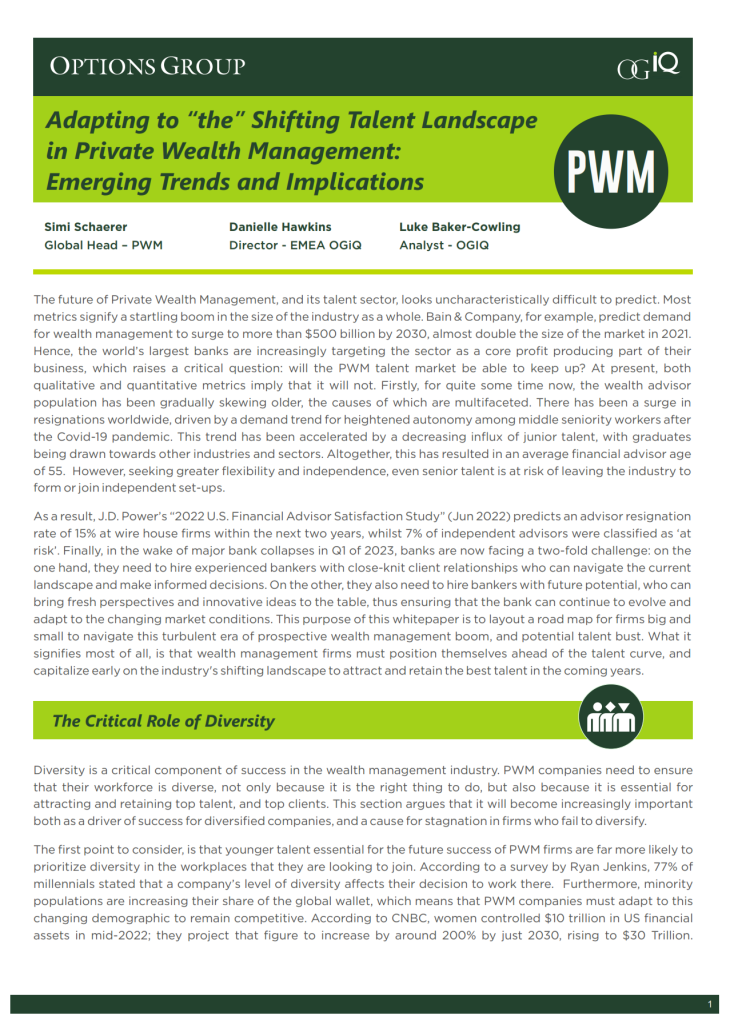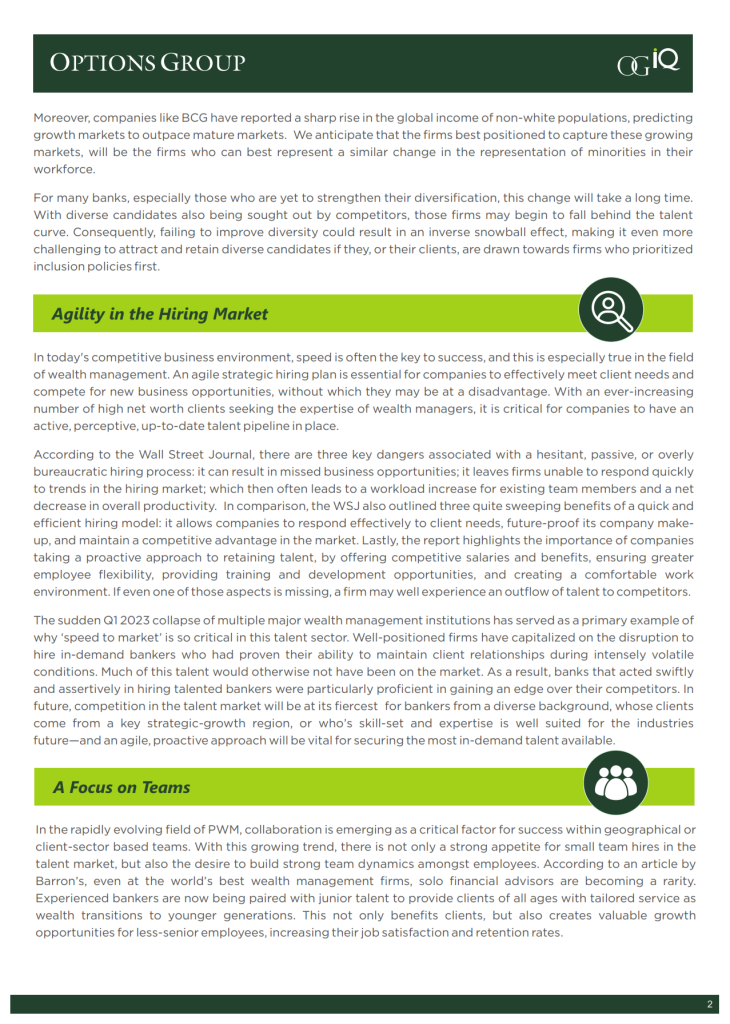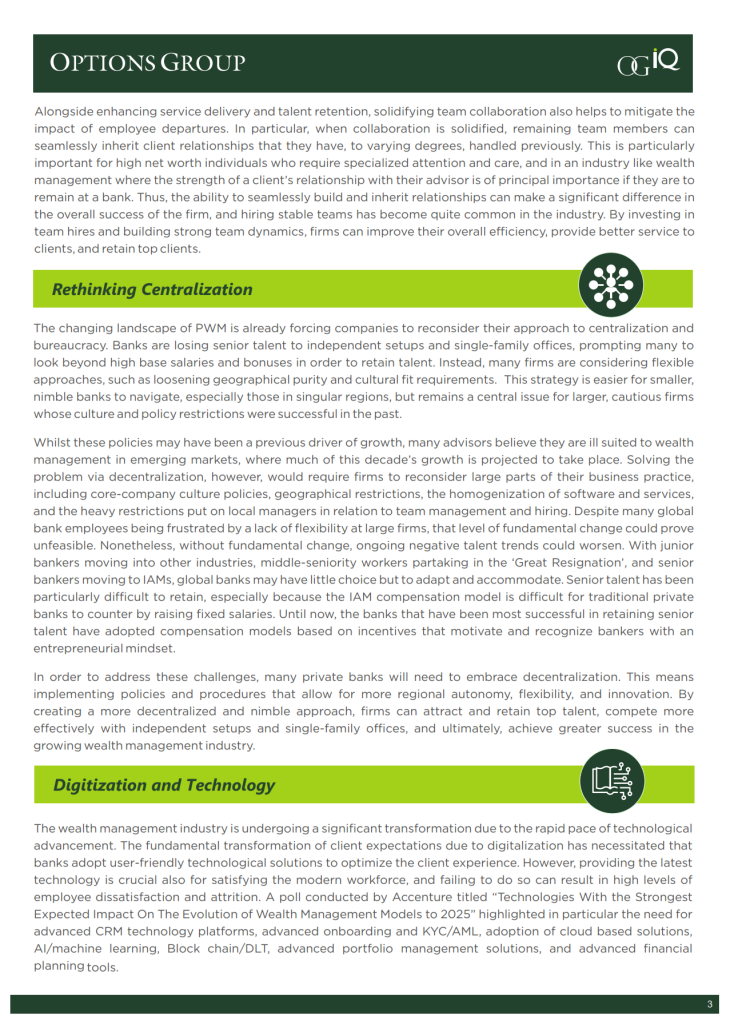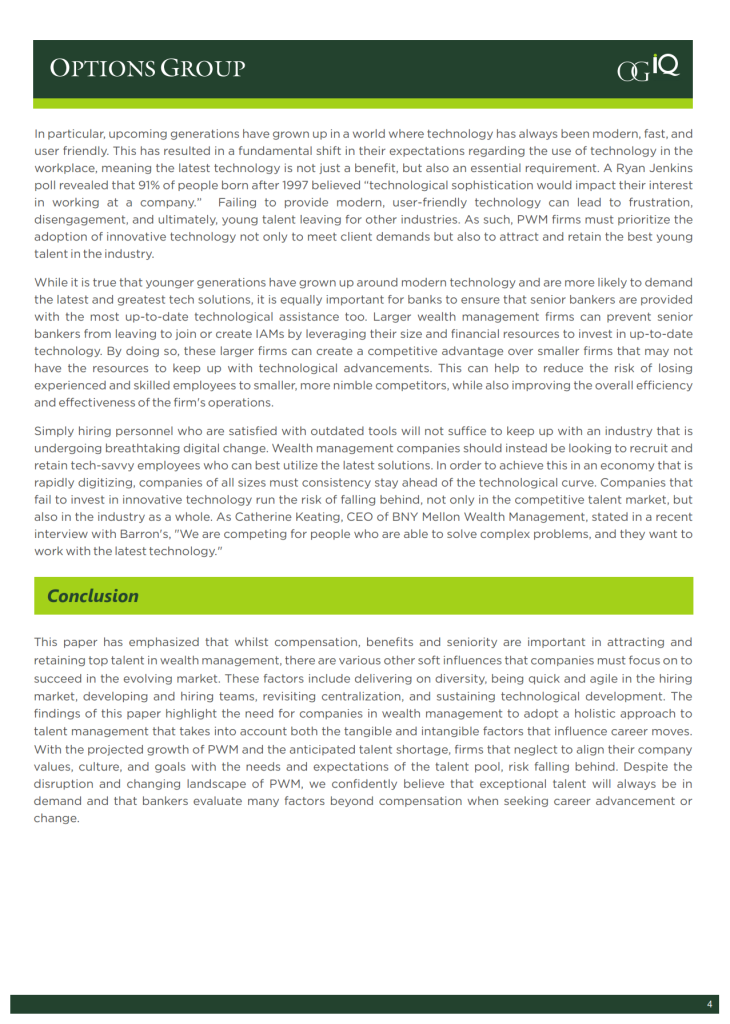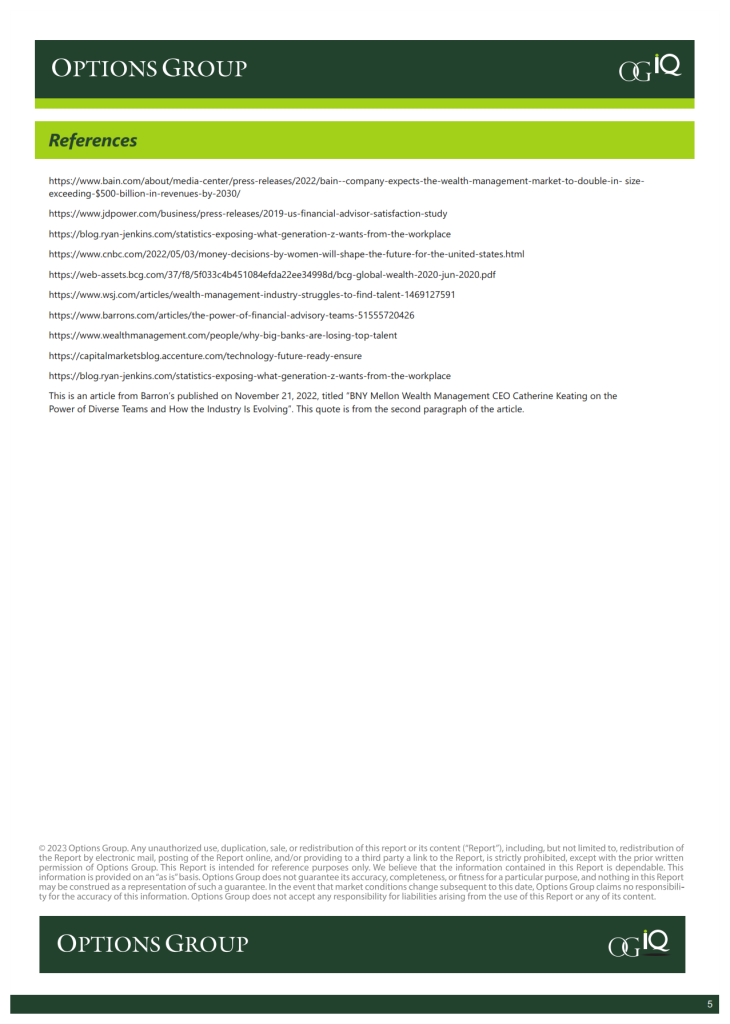PWM 2023
The future of Private Wealth Management, and its talent sector, looks uncharacteristically difficult to predict. Most metrics signify a startling boom in the size of the industry as a whole.
Bain & Company, for example, predict demand for wealth management to surge to more than $500 billion by 2030, almost double the size of the market in 2021. Hence, the world’s largest banks are increasingly targeting the sector as a core profit producing part of their business, which raises a critical question: will the PWM talent market be able to keep up? At present, both qualitative and quantitative metrics imply that it will not. Firstly, for quite some time now, the wealth advisor population has been gradually skewing older, the causes of which are multifaceted. There has been a surge in resignations worldwide, driven by a demand trend for heightened autonomy among middle seniority workers after the Covid-19 pandemic.
This trend has been accelerated by a decreasing influx of junior talent, with graduates being drawn towards other industries and sectors. Altogether, this has resulted in an average financial advisor age of 55. However, seeking greater flexibility and independence, even senior talent is at risk of leaving the industry to form or join independent set-ups. As a result, J.D. Power’s “2022 U.S. Financial Advisor Satisfaction Study” (Jun 2022) predicts an advisor resignation rate of 15% at wire house firms within the next two years, whilst 7% of independent advisors were classified as ‘at risk’. Finally, in the wake of major bank collapses in Q1 of 2023, banks are now facing a two-fold challenge: on the one hand, they need to hire experienced bankers with close-knit client relationships who can navigate the current landscape and make informed decisions. On the other, they also need to hire bankers with future potential, who can bring fresh perspectives and innovative ideas to the table, thus ensuring that the bank can continue to evolve and adapt to the changing market conditions. This purpose of this whitepaper is to layout a road map for firms big and small to navigate this turbulent era of prospective wealth management boom, and potential talent bust. What it signifies most of all, is that wealth management firms must position themselves ahead of the talent curve, and capitalize early on the industry’s shifting landscape to attract and retain the best talent in the coming years.
